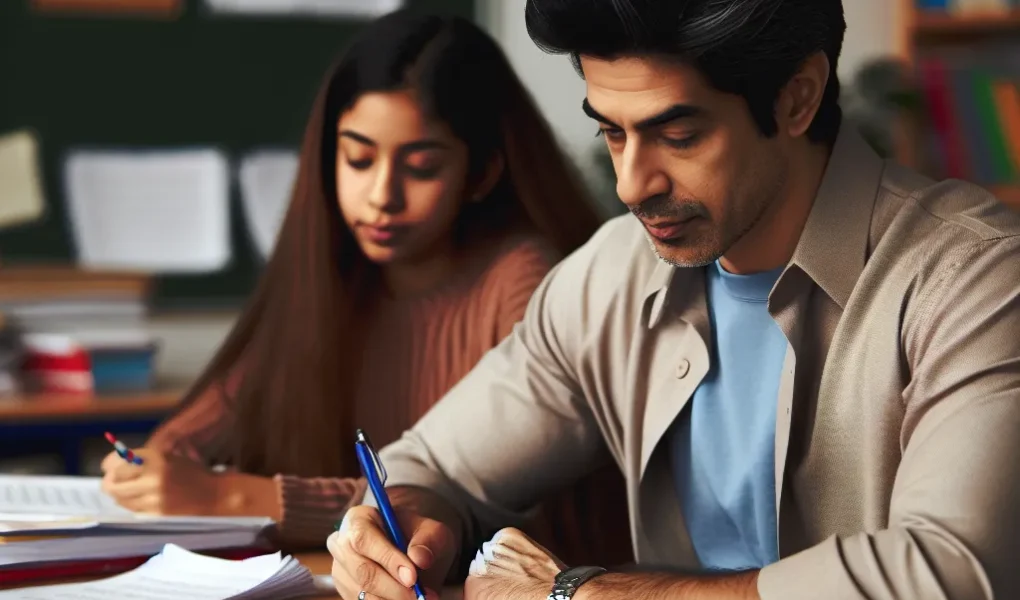The Importance of Correction in Writing
When it comes to improving writing skills, the role of correction cannot be overstated. The importance of correction in writing lies in its ability to enhance the precision, clarity, and coherence of the written piece. Through correction, writers have the opportunity to fine-tune their grammar, spelling, punctuation, and overall language usage.
Moreover, correction serves as a valuable tool for honing one’s language proficiency and mastery. By receiving and implementing corrections, writers can identify recurring errors and work towards eliminating them, thereby refining their writing abilities.
Additionally, the process of correction fosters a sense of attention to detail and a commitment to continuous improvement. It encourages writers to scrutinize their work critically, leading to the development of a more discerning and perceptive approach to writing.
In essence, the importance of correction in writing cannot be overlooked. It serves as a catalyst for growth, enabling writers to progress towards greater linguistic precision and eloquence.
Strategies for Effective Correction in Improving Writing Skills
Correction plays a crucial role in improving writing skills as it helps learners identify and rectify their mistakes, ultimately enhancing the quality of their written work. However, the effectiveness of correction largely depends on the strategies employed. Utilizing effective correction strategies can significantly contribute to the improvement of writing skills.
One effective strategy for correction is providing specific and targeted feedback. Instead of simply pointing out errors, instructors can offer detailed explanations and examples to help learners understand the nature of their mistakes. This approach not only corrects errors but also educates the learner, promoting long-term improvement.
Another valuable strategy is the use of peer correction. Encouraging students to review and provide feedback on each other’s work not only offloads some of the correction burden from instructors but also promotes collaborative learning. When students engage in correcting their peers’ work, they develop a deeper understanding of the writing conventions and learn from each other’s mistakes.
Furthermore, incorporating self-correction techniques empowers students to take ownership of their writing. By encouraging learners to review and revise their own work, they develop critical thinking skills and a heightened awareness of their writing style, leading to more autonomous and proficient writers.
In conclusion, effective correction strategies such as providing detailed feedback, encouraging peer correction, and promoting self-correction significantly contribute to the enhancement of writing skills. By implementing these strategies, educators can foster a more supportive and collaborative learning environment, ultimately leading to improved writing proficiency.
The Impact of Correction on Writing Development
Correction plays a crucial role in improving writing skills, as it helps students identify and rectify their mistakes. The impact of correction on writing development is significant, as it provides learners with valuable feedback that enables them to understand and apply the principles of effective writing. When students receive targeted and constructive corrections, they are more likely to develop a better understanding of grammar, vocabulary usage, sentence structure, and overall coherence in their writing.
Effective correction not only points out errors but also explains why they are incorrect, empowering students to enhance their writing skills progressively. By consistently receiving and implementing corrections, students can internalize the rules of language and develop a natural feel for expressing themselves in writing. Moreover, correction serves as a form of personalized instruction, addressing the specific needs of individual students and guiding them towards improvement.
Furthermore, the impact of correction on writing development extends beyond mere error correction. It encourages students to reflect on their writing, fostering critical thinking and analytical skills. By engaging with corrections, students learn to evaluate their work from a reader’s perspective and make conscious choices to enhance the clarity and effectiveness of their writing. As a result, students become more self-aware and adept at recognizing and addressing their writing weaknesses.
In conclusion, the impact of correction on writing development is profound, as it not only aids in error correction but also contributes to the overall growth of students as writers. Through targeted and constructive corrections, students can refine their writing skills, gain a deeper understanding of language conventions, and develop the ability to express their thoughts and ideas with clarity and precision.
Integrating Correction Techniques in Writing Instruction
Integrating correction techniques in writing instruction is crucial for improving the writing skills of students. By providing targeted feedback and guidance, educators can help students identify and rectify their writing errors, leading to enhanced language proficiency and communication abilities. One effective strategy is to incorporate a mix of error correction methods, such as direct correction, peer feedback, and self-assessment, into the writing process.
Direct correction involves the teacher identifying and correcting errors in students’ writing, providing explanations and alternative options. This approach offers immediate guidance and helps students understand their mistakes. Peer feedback encourages students to review and comment on each other’s work, fostering a collaborative learning environment and facilitating the development of critical evaluation skills. Additionally, self-assessment prompts students to reflect on their writing and identify areas for improvement, empowering them to take ownership of their learning process.
Furthermore, integrating correction techniques in writing instruction should prioritize constructive feedback that addresses the content, organization, language use, and mechanics of writing. By focusing on these elements, educators can support students in honing their overall writing proficiency. It is essential to strike a balance between highlighting errors and acknowledging the strengths of students’ writing, promoting a positive and encouraging approach to correction.
In conclusion, integrating correction techniques in writing instruction plays a pivotal role in nurturing students’ writing skills. By implementing diverse correction methods and emphasizing constructive feedback, educators can guide students towards producing well-crafted and effective written work.
Overcoming Challenges in Providing Effective Correction
When it comes to improving writing skills, the role of correction is crucial. However, providing effective correction can be challenging for educators and language instructors. One of the main challenges is finding the balance between correcting errors and preserving the writer’s voice and creativity. Overwhelming students with too many corrections can demotivate them and hinder their confidence, while providing too few corrections may not effectively address their areas for improvement.
Another challenge is identifying the most pressing issues to correct. Students at different proficiency levels may struggle with different aspects of writing, such as grammar, vocabulary, sentence structure, or organization. Understanding each student’s specific needs and tailoring the correction process to address those needs can be complex and time-consuming.
Additionally, there is the challenge of providing corrections that are both clear and instructive. Simply marking an error without explaining the underlying rule or offering suggestions for improvement may not help the student understand and learn from their mistakes. However, providing too much feedback at once can be overwhelming.
To overcome these challenges, educators can implement strategies such as selective error correction, prioritizing higher-order concerns like content and organization, and providing constructive feedback that guides students towards self-correction. Using tools like rubrics can also help standardize the correction process and provide clear guidelines for both educators and students.
In conclusion, while effective correction plays a vital role in improving writing skills, educators must navigate various challenges to ensure that the correction process is constructive and beneficial to the students’ overall development as writers.
The Role of Positive Feedback in Correction and Writing Improvement
When it comes to improving writing skills, the role of correction and feedback cannot be overstated. While the traditional approach to correction often focuses on pointing out errors and providing negative feedback, the role of positive feedback in the correction process is equally crucial. Research has shown that providing positive feedback alongside correction not only helps in improving writing skills but also boosts the writer’s confidence and motivation.
Positive feedback offers writers recognition for their strengths and accomplishments, which can be just as beneficial as identifying and addressing mistakes. It reinforces good writing practices and encourages writers to build on their existing skills. By acknowledging what has been done well, positive feedback creates a supportive and constructive environment for learning and improvement.
Furthermore, the incorporation of positive feedback in correction fosters a growth mindset, where writers view mistakes as opportunities for learning and development rather than as indicators of failure. This shift in perspective can lead to a more resilient and persistent approach to writing, ultimately contributing to long-term improvement.
In addition, the use of positive feedback in correction helps to create a balance between addressing errors and appreciating achievements. This balanced approach contributes to a more holistic and effective writing improvement process, where writers are motivated to engage with the correction feedback and actively work towards enhancing their skills.
In conclusion, the role of positive feedback in correction is instrumental in fostering a supportive, growth-oriented environment that promotes writing improvement. By recognizing and reinforcing strengths, positive feedback complements the correction process and empowers writers to strive for continued progress in their writing skills.


